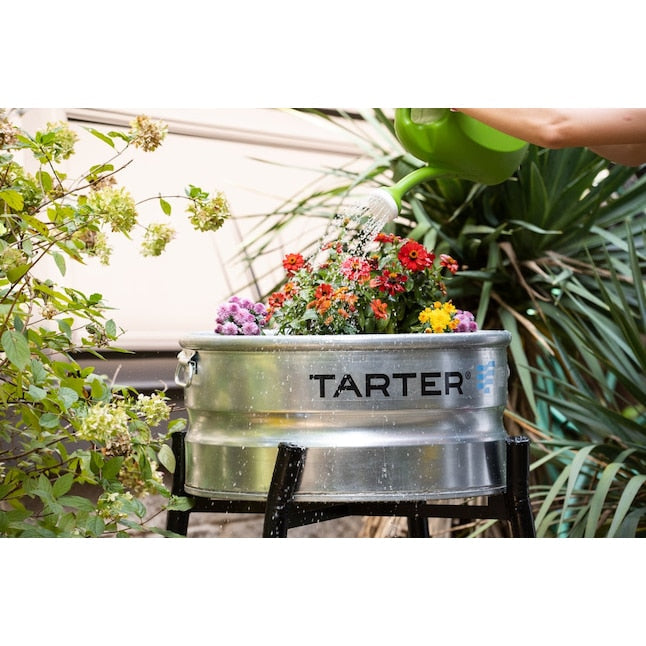
Essential Outdoor Planter Tips for Thriving Plants
Creating a lush, vibrant outdoor space is easy with the right outdoor planters and smart gardening practices. No matter if you have a small balcony or a big garden, using good outdoor planter tips can help your plants grow well. This planting tip guide will cover essential recommendations, including plant selection for sun and shade, planter size, soil quality, watering needs, and seasonal care tips.
1. Choosing the Right Plants for Your Outdoor Planters
Selecting the appropriate plants is crucial for the success of your outdoor planters. Consider the light conditions where your planters will be placed:
Planting Tips - Plants for Full Sun
Outdoor planters in sunny spots should house sun-loving plants that can thrive in bright conditions. Here are some excellent choices:
- Petunias: Colorful and hardy, petunias bloom throughout the summer.
- Lavender: Not only does lavender add beauty, but it also attracts pollinators and has a delightful fragrance.
- Zinnias: These vibrant flowers come in various colors and are very easy to grow.
- Herbs: Basil, rosemary, and thyme flourish in sunny conditions and provide fresh ingredients for your kitchen.
Planting Tips - Plants for Shade
For planters in shaded areas, select plants that thrive with less sunlight. Some suitable options include:
- Ferns: These lush greenery plants are perfect for low-light environments and add texture.
- Hostas: Known for their foliage diversity, hostas thrive in shaded conditions and come in various sizes and leaf colors.
- Begonias: With colorful blooms, begonias are excellent for shaded planters and add visual interest.
- Impatiens: These flowering plants provide vibrant color in shady spots, blooming continuously from spring to frost.
2. Planter Size Matters
Choosing the right size for your outdoor planters is vital for the health of your plants. Ensure that the containers are large enough to accommodate your plant's root system. Here’s a guideline for sizes:
- Small Plants: Smaller plants or herbs can thrive in planters that are at least 6 to 12 inches wide and deep.
- Medium Plants: For medium-sized plants, such as perennials or small shrubs, opt for planters that are at least 12 to 18 inches in diameter.
- Larger Plants or Small Trees: Consider larger outdoor planters (18 inches and above) for bigger plants or small trees, as they require more space for roots to spread out.
Drainage is Key
Regardless of the size, ensure the planters have proper drainage holes. Good drainage prevents water from pooling at the bottom, which can lead to root rot.
3. Selecting the Right Soil
Soil quality plays a significant role in the success of plants in outdoor planters. Here are some outdoor planter tips regarding soil choices:
- Potting Mix: Use a high-quality potting mix designed for container gardening. These blends are lightweight and provide effective drainage.
- Soil Enhancements: Consider adding organic matter, such as compost, to enrich the soil and improve nutrient retention. A mix of potting soil and compost typically works well.
- Seasonal Soil Refresh: At the start of each planting season, replace or refresh the soil in your planters to ensure your plants have access to nutrients.
4. Watering Wisely
Watering is an essential aspect of plant care in outdoor planters. Here are some tips to manage this effectively:
- Check Moisture Levels: Before watering, check the top inch of the soil for dryness. Overwatering can be just as damaging as underwatering.
- Deep Watering: When you water, do so thoroughly until it drains from the bottom of the planter. This encourages deep root growth.
- Adjust for Seasons: Be mindful that watering needs change with the seasons. During hot summer months, you may need to water more frequently, while cooler seasons may require less.
5. Seasonal Care Planting Tips
Caring for your outdoor planters requires attention to seasonal changes. Here are some guidelines:
- Spring: As the weather warms, it's the perfect time to plant new flowers and herbs. Refresh the soil and check for any winter damage.
- Summer: Monitor moisture levels closely during hot weather. Deadhead spent blooms to encourage more flowers.
- Fall: Prepare for cooler temperatures by transitioning to fall-friendly plants, such as ornamental kale or mums. Consider adding mulch to retain soil moisture.
- Winter: If you live in an area with harsh winters, consider bringing your planters indoors or covering them with protective materials to prevent freezing.
